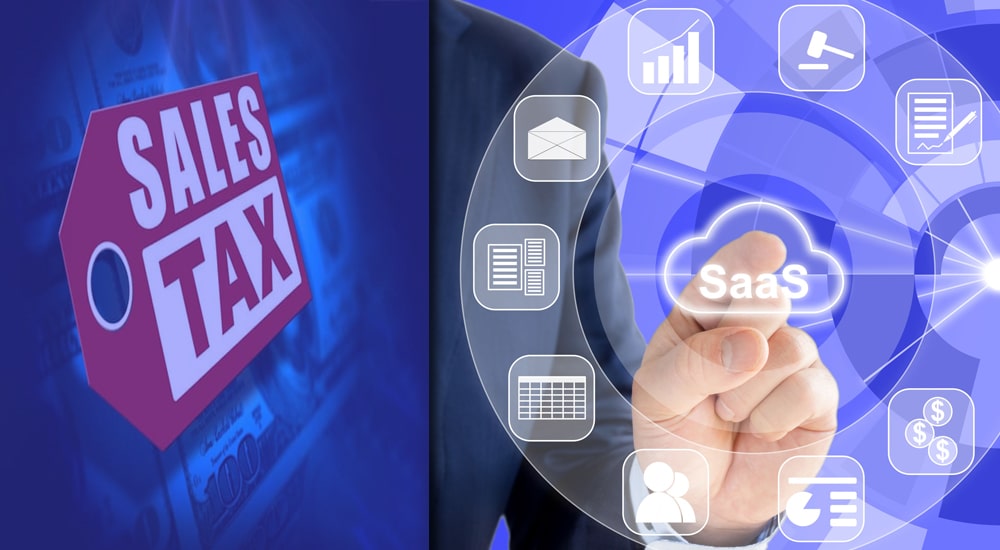
Managing sales tax is like trying to solve a Rubik’s Cube while riding a roller coaster—it’s tricky, complex, and always changing. Especially for SaaS (Software as a Service) companies, handling sales tax can feel like a never-ending maze of state-by-state rules, deadlines, and rates. One company in particular, let’s call them "Techify," faced this exact challenge. But rather than drowning in tax forms and filing deadlines, they turned to automation and transformed what seemed like an impossible task into a smooth, efficient process.
Here’s a fun twist—Techify’s journey to sales tax compliance automation not only saved them millions of dollars but also gave their finance team a much-needed break from endless calculations and error-checking.
The Problem: A Tax Maze Without a Map
As Techify scaled up its operations and expanded across the U.S., the headaches multiplied. Each state had different tax laws, especially when it came to digital services like SaaS. Some states imposed taxes, others didn’t, and still others were constantly changing their laws like a game of musical chairs. Let’s break down the main problems they faced:
- Diverse and Changing Tax Rules: Every state has its own quirky tax rules. For instance, Florida might not tax SaaS subscriptions, while New York would demand a cut. Keeping track of which state taxed what was like juggling with one hand tied behind your back. And with the rise of economic nexus laws (which create tax obligations for out-of-state businesses once they hit certain sales thresholds), Techify couldn’t afford to make mistakes.
- Manual Mayhem: Techify was managing sales tax compliance manually—yes, spreadsheets, sticky notes, and hours of tracking sales thresholds across different states. The result? Chaos. Their team spent more time filing tax returns than building the business.
- Compliance Risks: With growth came greater risk. Miss a state’s sales threshold? Congratulations, you owe back taxes, interest, and possibly some hefty fines. Techify’s manual approach was too prone to error, putting them at risk of falling out of compliance.
Did You Know? Did you know that the U.S. has over 10,000 tax jurisdictions? Keeping track of which state requires SaaS tax filings can quickly turn into a full-time job!
The Quest for Automation: Let Technology Do the Heavy Lifting
Techify knew they needed to ditch their manual sales tax process before things spiralled out of control. The solution? Automation. They sought a tool that could:
- Track state-specific tax thresholds and send alerts when they owe sales tax in new states.
- Calculate accurate sales tax rates in real-time, integrating directly into their billing system.
- Automate tax filings so the finance team could stop worrying about deadlines and start focusing on growth.
After exploring their options, they partnered with a sales tax automation provider that promised to handle it all—compliance, tax filings, and rate calculations—basically the accountant you’ve always wanted, but in software form.
The Automation Journey: How It Worked
With automation in place, Techify could finally breathe easy. Here’s what changed after they made the switch:
1. Nexus Tracking on Autopilot
Each state has its own rules for determining when a company owes sales tax, typically based on revenue or transaction volume. The automation tool kept an eagle eye on Techify’s sales across the U.S. and flagged them when they crossed these thresholds. This meant they were never caught off-guard by suddenly owing sales tax in a new state.
For example, when Techify hit $200,000 in sales in Illinois, the system pinged their finance team, so they could register for sales tax and avoid penalties. No more sleepless nights wondering if they’d missed a filing deadline.
2. Real-Time Tax Rate Calculation
Instead of guesstimating tax rates or relying on outdated data, Techify’s automation platform integrated directly with their billing systems. This meant it automatically calculated the correct tax rate based on the customer’s location. So if someone from California bought their software, the platform applied the appropriate tax without lifting a finger.
This saved the team from potential errors and awkward conversations with customers about incorrect invoices. Plus, their customers were happy to see their invoices match up exactly with state tax laws.
3. Filing Taxes with Zero Stress
Perhaps the biggest relief came from the platform’s automated tax filing feature. Every month, the system compiled the data, generated the tax returns, and submitted them to the proper tax authorities. No more shuffling through papers or logging into five different state websites just to file taxes. The software did it all.
In one tax cycle, Techify saved more than 60 hours of labour by automating returns for 15 different states. Time they could now use for, well, literally anything more exciting than filing taxes.
Did You Know? On average, SaaS companies spend over 80 hours per year on tax compliance. With automation, Techify cut that down to nearly zero!
4. A Fortress of Compliance Documentation
The platform also kept a tidy record of every single sales tax transaction, which was a lifesaver during audits. With a few clicks, Techify could pull up comprehensive reports to prove compliance, ensuring they were always audit-ready. For a finance team that used to scramble at the mere mention of “audit,” this was game-changing.
The Results: Efficiency, Savings, and a Happy Finance Team
The results of automating sales tax compliance were beyond Techify’s expectations. Here’s what they gained:
1. Massive Cost Savings
Automation didn’t just make their lives easier—it saved them money, too. By avoiding penalties for late filings and reducing labour costs, Techify estimated that they saved over $2 million annually. Here’s how:
- Fewer Penalties: The automation tool ensured that they never missed a filing deadline, preventing costly penalties.
- Labour Savings: Techify’s finance team could now focus on strategic initiatives rather than chasing tax rates, saving both time and salaries.
- Accuracy: No more overpaying or underpaying taxes, which eliminated the costly process of correcting returns and dealing with fines.
2. Enhanced Efficiency and Scalability
The automation system didn’t just make their team’s jobs easier—it made the entire company more efficient. They no longer had to divert resources toward tracking sales tax obligations. Instead, the finance team could focus on higher-level financial planning and forecasting.
Plus, as Techify continued to grow, they didn’t need to worry about being overwhelmed by new tax obligations. The platform easily scaled with them, handling more states and transactions with zero added stress.
3. Built-In Compliance Security
Perhaps most importantly, the company felt confident they were always in compliance. They knew exactly when they owed tax in new states, and the automation platform kept everything organised for audit purposes. No more scrambling to pull together paperwork at the last minute.
Did You Know? Automated tax platforms are often up to 90% more accurate than manual methods, significantly reducing the risk of errors and penalties.
Lessons Learned: Why Every SaaS Business Should Automate
Techify’s story isn’t unique—many SaaS companies face similar challenges with sales tax compliance. Here are some key takeaways from their experience:
1. Manual Methods Are Outdated
Trying to manually handle sales tax compliance is like trying to solve a puzzle without the box cover—frustrating and likely to go wrong. As your company grows, automation is the only practical way to stay compliant without draining your resources.
2. Compliance is More Than Just Filing
Sales tax compliance is a moving target. Between different state laws and changing thresholds, automation helps ensure that your business is always one step ahead of potential fines.
3. Automation Pays Off
While investing in an automation platform may seem like a big upfront cost, the savings in labour, penalties, and overpayments make it well worth it. It’s not just a time-saver; it’s a long-term investment that pays off in big ways.
Conclusion: Sales Tax Automation is a Game-Changer
Techify’s decision to automate their sales tax compliance turned a major headache into a smooth, effortless process. They saved millions of dollars, freed up valuable time, and eliminated the risk of non-compliance. Most importantly, their finance team could finally focus on growing the business instead of getting bogged down in tax minutiae.
Sales tax automation isn’t just for big companies. Any SaaS business looking to scale without being tripped up by tax laws should consider automation a must-have.
Did You Know? Businesses that automate sales tax compliance can reduce their tax-related workload by up to 85%—and invest that time back into their company’s growth!
If you’re tired of juggling tax rates, filing deadlines, and nexus thresholds, follow Techify’s lead. Automate and reclaim your time, money, and sanity!
Contact us today at trykintsugi.com for a free demo and see how we can help your business thrive in the digital economy!





